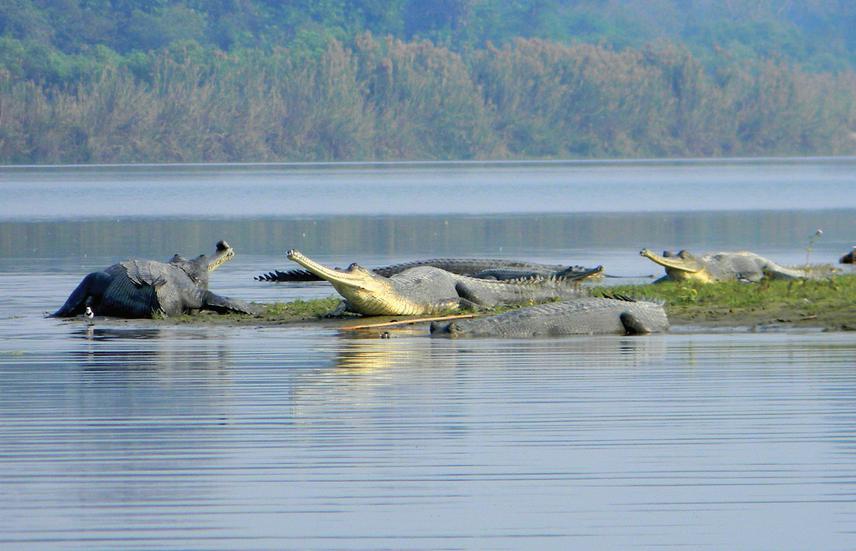Gaurav Vashistha
Other projects
29 Sep 2016
Population Studies on the Critically Endangered Indian Gharial Gavialis gangeticus in the Katarniaghat Wildlife Sanctuary, Uttar Pradesh, India
The aim of our study is to understand the population structure of gharials at Katarniaghat. Our primary focus is on the total population size, their age class distribution and breeding adults. Second stage of work focuses on the mating and nesting strategy which is followed by community sensitization towards conservation of crocodiles in Katarniaghat. One important component of work focuses on assessing variation in this population for which we are testing non destructive sampling methods.

Gharial is a critically endangered crocodile, endemic to the Indian subcontinent. Present day gharial populations face extremely reduced habitat range, habitat fragmentation and modification. Habitat constraints impact the life history stages such as mating strategy, nesting and hatching as well as the total population size.
In our previous study, we conducted a pilot assessment of Katarniaghat gharial population and identified very important conservation issues. In this present study, we will continue with the previous objectives while adding the temporal variation to the study design. We are focussing on conducting a population census to count population size based on size, breeding adults and hatchling recruitment from last season. Our second component focuses on nesting ecology. The forest department has implemented recommendations from our last study and now we will be studying the influence of these management interventions. We are engaging IR camera traps to monitor the life history stages with least disturbances possible.
Community participation is the most important aspect of conservation. We will continue with our previous awareness work and expand our network of volunteers. We are involving involve agencies from diverse fields to expand the impact of this work.
Katarniaghat has the second most robust gharial population which has the potential as a restocking founder population. We are working on the variation of this population while engaging least destructive sampling methods. There have been multiple restocking releases in katarniaghat and hence we are working on understanding the influence of these introductions on the total population variation as well as present day flow across generations.